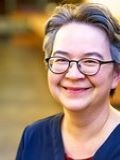
On May 7th 2022, Eltas welcomed Khanh-Duc Kuttig for her workshop ‘Grammar as a Fifth Skill’. It was also our first hybrid event, with people attending both in person in Stuttgart and online from all over Germany.
Grammar itself can be a loaded term, often eliciting negative reactions from students and even some teachers. Khan-Duc addressed this in the first part of her talk by giving us the following question and prompts.
- What is language?
- When I think of communication, I think of…
- When I think of grammar, I think of…
Participants discussed these in groups (with hybrid participants in breakout rooms) and came up with a range of interesting answers, as you can see below. My personal favourite was: “Grammar is your language driver‘s license.”
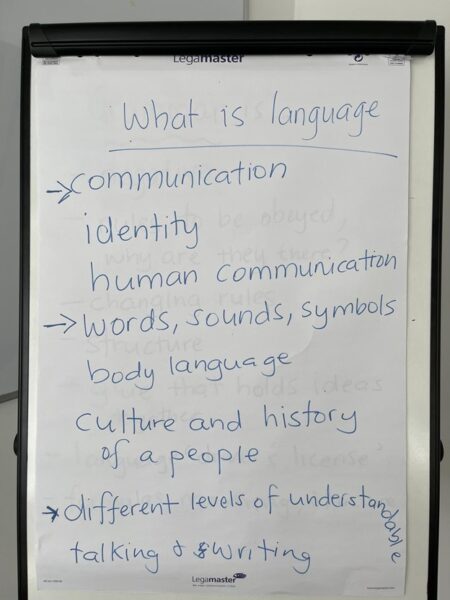
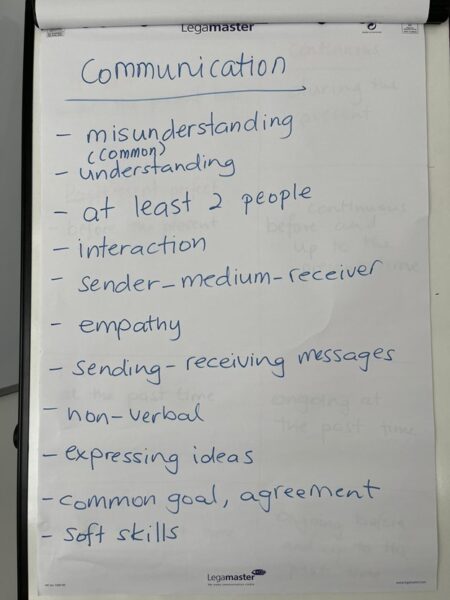
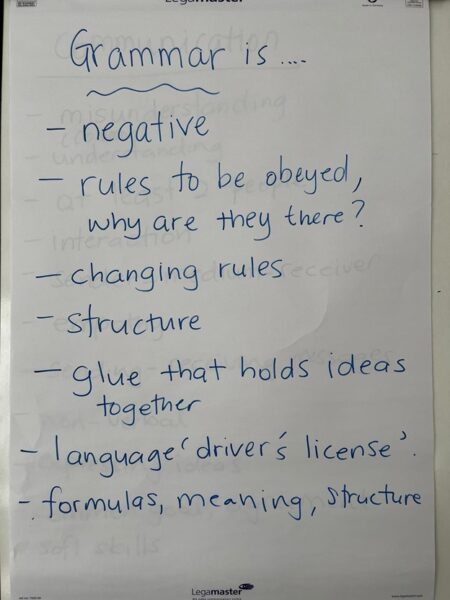
However, Khanh-Duc raised the point that it is questionable as to whether grammar and communication are actually separate entities and whether we can really teach grammar without teaching communication. In that case, we can put them together and make learning fun.
But how can we do this? According to Khanh-Duc, we teach grammar so that our students can use it…
- accurately
- meaningfully
- appropriately
…and to do this we use a ‘three dimensional’ model consisting of form, meaning and context.
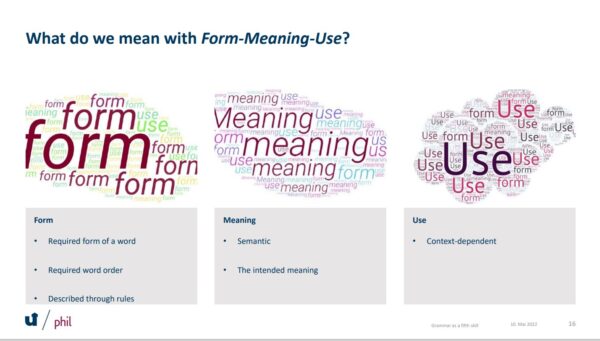
1)Form: This is the structure, for example adding -ed to the stem of a verb to form the regular simple past. However, it is more than just knowing and understanding rules (implicit knowledge). It is also being able to apply them (explicit knowledge). This allows students to use grammar to express themselves accurately.
2) Meaning: This is the semantic meaning, which is important because if we want to make grammar about communication, then meaning is key. Students need to be able to make the right choices regarding the meaning that they want to communicate. This allows students to use grammar to express themselves meaningfully.
3) Use: This is the context in which the structure is used. Some structures may have the same meaning but are used in different contexts, for example if and should in conditional contexts (if you have any problems versus should you have any problems) or have to and must. This allows students to use grammar to express themselves appropriately.
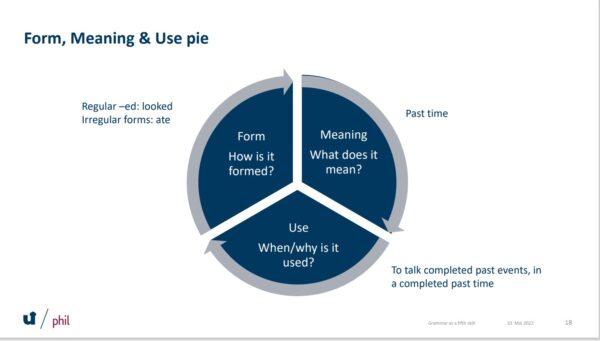
Khanh-Duc pointed out that one aspect will often be more challenging than others. Learners may need to focus on different things at different times, for example beginners will need more practice of the form. However, by focusing on these different aspects and how we USE grammar we can teach it as SKILL- something they need to communicate- rather than just some sort of glue for sentences. This skill can be called ‘grammaring’, which was originally put forward by Dianne Larsen-Freeman in her 2003 book, ‘From Grammar to Grammaring.’
So how can we ‘do grammaring?’ Khanh-Duc talked about the importance of moving beyond just doing the grammar that is presented in textbooks. She instead proposed a responsive approach based on the needs of learners in the classroom and their natural learning process, for example the DOGME method. We also looked at inductive teaching versus deductive teaching and when each method is appropriate. Most of all she emphasized the importance of teaching all three dimensions of grammar, concentrating not only on rules but the reasons for using certain constructions.
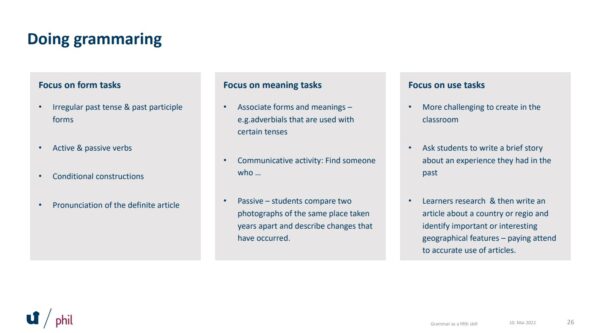
Although I have mainly focused on theory in this review, I would like to add that the workshop itself was very interactive for both the participants attending in person and those online. There were many opportunities for us to provide input and take part in discussions. These included presenting and discussing grammar activities that we use ourselves and analyzing them for which dimension of grammar they focused on. As a virtual participant myself, I was very impressed by how seamlessly Khanh-Duc included and integrated us into the workshop. It felt appropriate that a workshop that sought to change the paradigms for how we approach teaching grammar at the same time broke new ground on how we can learn together and build a community as an organization.
After the workshop some of us went out for a meal in Stuttgart, which was a wonderful end to the day. On behalf of ELTAS, I‘d like to thank Khanh-Duc for her insightful and thought provoking workshop.


No Comments Yet